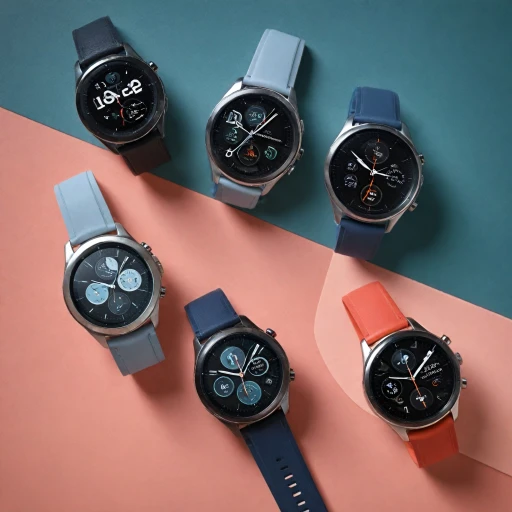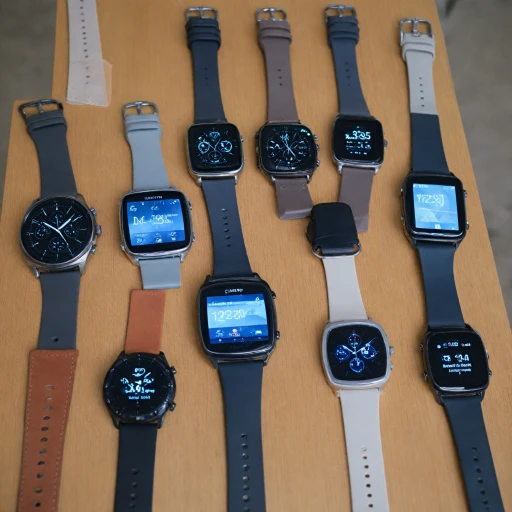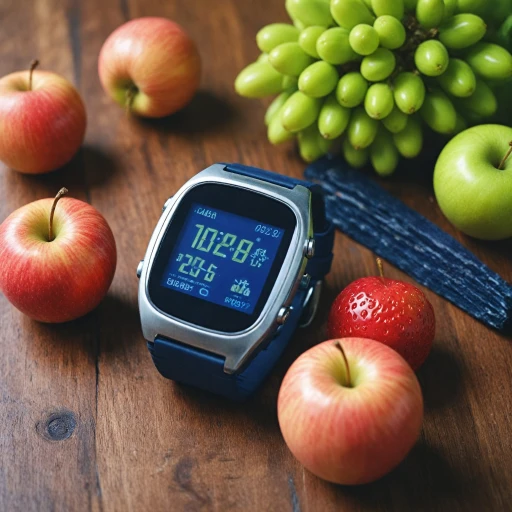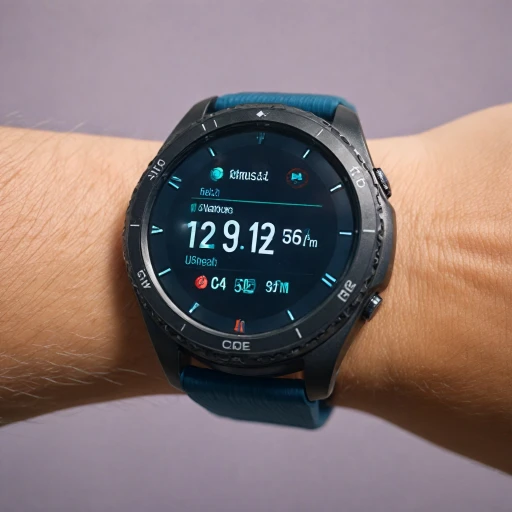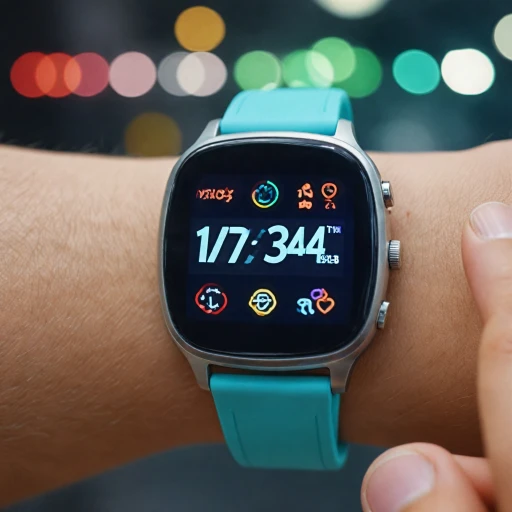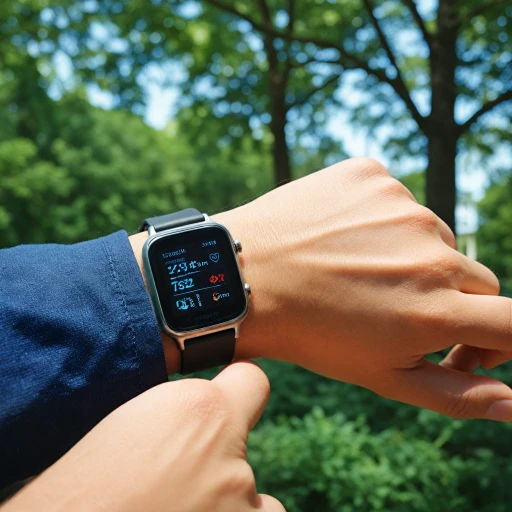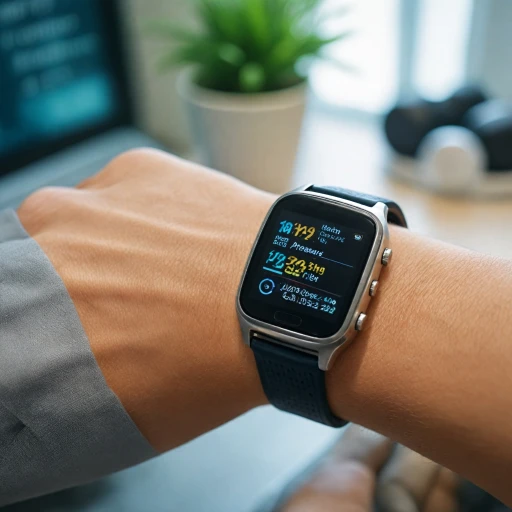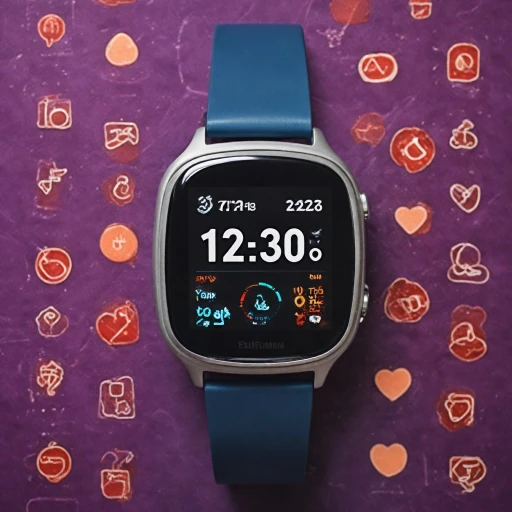The Evolution of Smartwatch Technology
The journey from timepieces to smart devices
The evolution of smartwatches has been remarkable, with advancements transforming these gadgets from simple timekeepers to powerful devices capable of tracking health metrics and ensuring safety. In recent years, the integration of sophisticated fall detection technology has highlighted how far smartwatches have come. This transformation reflects continuous technological breakthroughs, enhancing the capability of these wearables beyond basic functions.
Smartwatch advancements and their impact on health monitoring
Initiatives by major brands like Apple and Samsung have marked significant milestones in the smart device industry. With models such as the Apple Watch Series and Samsung Galaxy Watch, users can now experience features like heart rate monitoring, GPS tracking, and comprehensive health assessments at their wrists. As smartwatches became more intricate, the development of features like fall detection was inevitable, offering a new layer of security by automatically contacting emergency services when necessary.
Combining style with safety
Today's smartwatches seamlessly blend style and functionality. They have become essential lifestyle companions, enabling users to stay connected with vital information while also offering peace of mind. Devices such as the Galaxy Watch and Watch Ultra not only boast sleek designs but also house critical health and emergency features, such as emergency SOS and emergency contacts integration. This convergence of technology and design shows the priority given to user safety across the industry.
A glimpse into a connected future
The future of smartwatches is promising, with upcoming innovations focused on enhancing safety and health diagnostics. Existing fall detection and medical alert capabilities will likely advance in accuracy and responsiveness. The integration of health features like glucose monitoring adds another dimension, allowing users to keep track of critical health metrics seamlessly. According to the how smartwatches monitor blood sugar levels article, this integration is becoming a reality, further solidifying the role of smartwatches as essential tools for proactive health management.
How Fall Detection Works in Smartwatches
Mechanisms Behind Smartwatch Fall Detection
The intricate mechanisms that drive fall detection in smartwatches are a testament to ongoing advancements in wearable technology. Central to this is the blend of sensors and algorithms working cohesively to identify a fall event with precision. Key players like Apple and Samsung integrate cutting-edge technology into their watch (such as the Apple Watch and Samsung Galaxy Watch) to enhance user safety and health monitoring.
Primarily, fall detection in a smartwatch leverages an accelerometer, gyroscope, and GPS tracking to monitor movement patterns and orientation. When a fall is detected, these devices analyze the impact and consequent motion through algorithms designed to differentiate between common movements and potential emergencies. The watch's ability to alert users even extends to accidental falls, where the wearer can cancel the alert if no help is needed, although should a user remain inactive after a fall, an automatic emergency sos smartwatch action may be initiated.
Moreover, advancements in battery life ensure that these features remain operational when most needed, presenting users with a reliable tool in emergency scenarios. This makes smartwatches a valuable companion for those prone to falls, including the elderly and individuals with mobility issues. This detailed product description of fall detection features highlights their significance beyond mere technological flair, providing life-saving interventions by contacting emergency services or designated emergency contacts.
Benefits of Fall Detection for Different Users
Advantages of Fall Detection for Diverse Users
The inclusion of fall detection in smartwatches provides numerous benefits across different user demographics. By leveraging technology such as GPS and heart rate monitoring, wearers can enjoy an enhanced sense of security and health management.- Older Adults: Fall detection is especially valuable for older users, who are at a higher risk of falls due to age-related balance issues. Instantly alerting emergency services or a designated medical alert contact ensures quick assistance, dramatically reducing the potential for serious health complications.
- Individuals with Health Conditions: For those with medical conditions that increase the likelihood of falling, such as epilepsy or hypertension (learn how smartwatches can help on our guide to solving Fitbit syncing issues), smartwatches with fall detection can be a lifesaver, providing timely help during critical moments.
- Active Lifestyle Enthusiasts: Athletes and active individuals can benefit from the added safety of having fall detection features when engaged in high-risk sports or outdoor activities. This ensures that any abrupt accidents do not go unnoticed, particularly in remote areas.
- Daily Commuters: With the unpredictable nature of commuting, fall detection offers a safety net for individuals traveling to and from work. Whether it's due to transportation mishaps or spills during slippery conditions, smartwatches provide reassurance that emergency SOS protocols can be activated if needed.
Comparing Fall Detection Features Across Brands
Comparative Analysis of Leading Brands
Smartwatch brands like Apple, Samsung, and Google have made significant advancements in integrating fall detection features into their devices. These features not only track physical activities but also enhance user safety, employing cutting-edge technology to detect falls accurately.- Apple Watch: Known for its impeccable design and advanced health features, the Apple Watch includes a sophisticated fall detection capability powered by sensors and algorithms. When a fall is detected, it delivers a prompt to contact emergency services or alert designated emergency contacts. The Apple Watch Series also offers GPS tracking, ensuring that users can stay connected even in emergencies.
- Samsung Galaxy Watch: The Samsung Galaxy Watch series utilizes similar fall detection technology, offering a responsive emergency SOS system that alerts contacts if a fall is detected. With integrated health tracking features and a robust battery life, it provides a reliable safety net, especially for older adults and individuals with medical conditions.
- Google Pixel Watch: Although relatively new to the smartwatch scene, Google’s Pixel Watch promises competitive fall detection features. It provides an emergency alert system and tracks health metrics such as heart rate, making it a valuable tool for immediate medical alert in case of falls.
Features and Performance Insights
The success of these fall detection features largely depends on the precision of the sensors and the effectiveness of the emergency alert system.- Sensor Technology: Watches like the Apple Watch utilize a combination of accelerometers and gyroscopic sensors to detect sudden movements like falls. This ensures that small mishaps are distinguished from genuine falls, reducing false alarms.
- Emergency Response: Once a fall is detected, these devices perform a crucial role in connecting with emergency services or pre-set emergency contacts. The SOS smartwatch functionality in these devices is particularly useful for ensuring prompt medical response.
Battery Life Considerations
Battery life is a critical factor when considering a smartwatch with fall detection features. Devices like the Samsung Galaxy Watch Ultra emphasize long-lasting battery performance, crucial for dependability during emergencies where battery drainage could compromise safety. In sum, modern smartwatches, equipped with fall detection, offer substantial peace of mind through advanced technology and real-time connectivity. For those exploring medical alert capabilities, these devices provide a valuable blend of safety features and everyday usability.Real-Life Scenarios: Fall Detection in Action
When Fall Detection Makes a Real Difference
In each moment of daily life, having the assurance that your smartwatch can step in and act is invaluable. Real-life scenarios showcase just how transformational smartwatches can be when equipped with fall detection features. Let's explore a few examples where these features prove life-saving and supportive.- Immediate Emergency Alerts: When a fall occurs, time is often of the essence. Smartwatches like the Apple Watch or Samsung Galaxy Watch automatically send an emergency alert to predefined contacts or directly to emergency services. This immediate response ensures that help is on the way without delay.
- Senior Safety: For elderly individuals living independently, smartwatches with fall detection provide peace of mind. If a fall is detected, the smartwatch can trigger medical alert services, which leads to a prompt response that could be crucial if the wearer cannot reach a phone.
- Sport and Activity Tracking: Fitness enthusiasts often push their limits, whether hiking rugged terrains or cycling through challenging paths. A fall detection feature not only tracks their activity but also acts in emergencies, alerting the necessary contacts based on their GPS location through series GPS tracking.
- Health Monitoring: Alongside heart rate monitoring and other health features, many wearers rely on fall detection for health-related incidents. For those managing conditions like dizziness or balance disorders, knowing their smartwatch can signal for help makes everyday tasks safer.
Future Trends in Smartwatch Safety Features
Looking Ahead: The Next Generation of Safety in Smartwatches
The evolution of smartwatch technology has truly redefined how users perceive wearable gadgets, especially with the integration of life-saving features like fall detection. As the industry progresses, the future of safety-focused features in smartwatches looks more promising than ever.
Current smartwatches like the Apple Watch and Samsung Galaxy Watch series have set a high standard with their fall detection and emergency SOS capabilities. These gadgets are more than just fashion accessories; they are integrated health devices that keep users connected to essential emergency services at all times.
A trend to watch is the ongoing improvement in heart rate tracking and GPS accuracy, promising users a more reliable emergency alert system. In addition, brands are working towards enhancing battery life, ensuring that vital health and medical alert features are always active, regardless of other functionalities being in use.
In the future, smartwatches could offer expansive health monitoring features, seamlessly integrating with medical devices. For instance, there may be improvements beyond current watch series, focusing on expanding connectivity to encompass better phone, GPS, and health-related communications. Beyond simple fall detection, we can expect enhanced support for different types of incidents, broadening the scope of what these features can sense and alert to.
Finally, as consumer demands evolve, smartwatches will likely include even more advanced medical tools, potentially supporting a broader range of health parameters. Customer reviews play an integral role in shaping these advancements, ensuring that users stay connected and receive timely help in critical situations. This cooperation between users and developers could lead to innovative products tailored to specific needs, strengthening the bond between technology and personal well-being.



